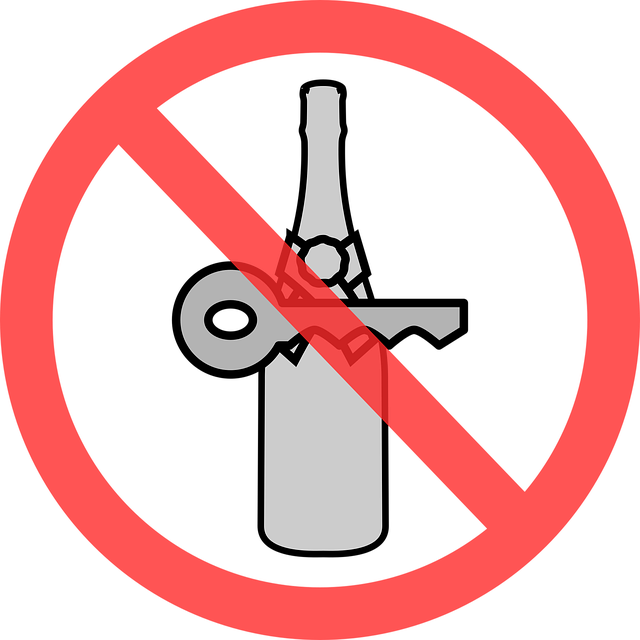Rural areas face unique challenges in DUI (drunk driving under influence) prevention due to low population density, dispersed neighborhoods, and limited access to resources. Effective strategies involve engaging community leaders, leveraging local institutions, and tailoring interventions to the specific cultural and economic context. Early intervention programs for teens, using peer mentorship and educational workshops, reduce drunk driving incidents among youth. Community-based outreach, incorporating modern technology and real-life case studies, educates young drivers about rural DUI risks. Building strong community support systems through awareness campaigns, events, and partnerships significantly discourages impaired driving. Accessible communication, using plain language and culturally relevant examples, addresses at-risk youth. Continuous monitoring, follow-up, and leveraging technology enhance prevention success in rural communities.
In rural communities, DUI prevention presents unique challenges distinct from urban settings. With limited access to resources and higher rates of at-risk youth, addressing early alcohol consumption is crucial. This article explores effective strategies tailored to rural areas, focusing on understanding local DUI dynamics, implementing impactful intervention programs, and fostering community engagement.
Through engaging young drivers, building support networks, utilizing targeted communication, and ensuring ongoing monitoring, these initiatives aim to significantly reduce Rural Community DUI Prevention.
- Understanding Rural Community DUI Prevention Challenges
- Impact of Early Intervention Programs on Youth
- Strategies to Engage and Educate Young Drivers
- Building Community Support for DUI Prevention
- Effective Communication Tactics for At-Risk Youth
- Monitoring and Follow-up: Ensuring Long-Term Success
Understanding Rural Community DUI Prevention Challenges

In rural communities, addressing DUI (drunk driving) prevention presents unique challenges that often differ from urban areas. The lower population density and dispersed neighborhoods can make it harder to implement high-visibility police patrols, a common strategy in urban settings. This makes early intervention and education even more crucial—since emergency services are farther apart, the consequences of impaired driving can be more severe.
Additionally, rural areas may have limited access to substance abuse treatment centers and social support networks, which can make it difficult for at-risk individuals to seek help. Engagement with community leaders and leveraging existing resources, such as schools, churches, and local businesses, become vital in implementing effective Rural Community DUI Prevention strategies. Tailoring these efforts to the unique cultural and economic fabric of rural communities is essential for long-term success in reducing drunk driving incidents.
Impact of Early Intervention Programs on Youth

Early intervention programs play a pivotal role in preventing youth from engaging in risky behaviors, particularly in rural communities where DUI-related issues might be more prevalent and less addressed due to limited resources. These initiatives focus on educating young people about the consequences of drinking and driving, often through interactive workshops, peer mentorship, and community outreach. By reaching out to teens early on, these programs can significantly alter their decision-making processes and help them understand the potential long-term effects of drunk driving.
In rural settings, where social support networks might be less abundant, targeted interventions can foster a sense of belonging and encourage positive peer influence. Engaging youth in activities that promote responsible choices and healthy alternatives to alcohol consumption can lead to lasting behavior changes. Such programs not only reduce the likelihood of early DUI incidents but also contribute to building resilient communities capable of addressing other at-risk behaviors among young people.
Strategies to Engage and Educate Young Drivers

Engaging and educating young drivers in rural communities is a multifaceted approach, requiring tailored strategies to combat the unique challenges posed by Remote locations. One effective method is community-based outreach programs that utilize peer mentors from within the youth population. These peers can deliver compelling messages about responsible driving, as their experiences and perspectives often resonate more strongly with fellow young adults. Educational workshops focused on understanding the risks of DUI (drunk or drugged driving) in rural settings are crucial, highlighting potential dangers such as longer response times for emergency services due to distance.
Leveraging modern technology, like interactive online forums and social media campaigns, can enhance engagement. These platforms allow for year-round access to safety information and facilitate open dialogues about the impacts of DUI. Additionally, integrating real-life case studies and personal narratives from rural communities can make educational efforts more impactful, fostering a sense of shared responsibility for road safety.
Building Community Support for DUI Prevention

In rural communities, building community support is pivotal for effective DUI (drunk driving) prevention strategies. Engaging local leaders, organizations, and residents is essential to creating a culture that discourages impaired driving. This can involve organizing awareness campaigns, hosting educational events, and establishing partnerships with schools and community centers to reach young people before they engage in risky behaviors. By fostering open dialogues about the dangers of drunk driving and promoting responsible choices, these collaborative efforts can significantly reduce Rural Community DUI Prevention instances.
Community support also facilitates the implementation of successful interventions. Local initiatives, such as designated driver programs, ride-sharing services, and strict enforcement of minimum legal drinking ages, are more likely to thrive with widespread backing. Encouraging citizens to take an active role in prevention through reporting suspicious behavior and supporting local law enforcement efforts further strengthens the safety net against rural community DUI incidents.
Effective Communication Tactics for At-Risk Youth

In rural community settings, where access to resources and support systems might be limited, effective communication is key in preventing early DUI among at-risk youth. Engaging young people requires a multifaceted approach that combines education, empathy, and accessibility. Using plain language and relatable examples can help break down complex topics like alcohol’s effects on the body and mind, especially when tailored to their cultural context. Peer-to-peer conversations and community events can make these discussions more comfortable and appealing, fostering open dialogue about responsible drinking and the dangers of impaired driving.
For at-risk youth in rural areas, understanding the local dynamics and challenges is essential. Tailoring communication strategies to address specific issues faced by young people in their communities can significantly enhance the impact of prevention efforts. This might involve collaborating with local influencers or community leaders who can advocate for responsible behavior and dispel myths surrounding alcohol consumption, making it a more relatable and compelling message.
Monitoring and Follow-up: Ensuring Long-Term Success

In rural community settings, effective DUI prevention strategies often rely heavily on robust monitoring and follow-up mechanisms. Beyond initial intervention, ongoing surveillance plays a pivotal role in ensuring long-term success. This involves regular check-ins with at-risk youth, particularly those who have previously displayed indicators of substance abuse or shown interest in high-risk behaviors like drinking and driving. By maintaining open lines of communication, community leaders and support systems can offer guidance, address any emerging issues promptly, and provide the necessary resources for sustained behavioral change.
Additionally, utilizing technology such as mobile apps or online platforms designed for youth engagement and monitoring can be game-changing in rural DUI prevention. These tools allow for remote tracking of at-risk individuals, enabling interventions before potential incidents escalate. Tailored educational resources and support networks accessible through these platforms foster a culture of responsibility and safety, ultimately contributing to the overall success of rural community DUI prevention efforts.
In addressing Rural Community DUI Prevention, a multi-faceted approach is crucial. By implementing early intervention programs, engaging young drivers through educational strategies, fostering community support, and employing effective communication tactics, we can significantly reduce DUI rates among youth. Monitoring and follow-up ensure long-term success, creating a safer and more responsible driving culture within these communities. These efforts not only protect lives but also build a brighter future for rural areas.






